Recently, I went to St. Albans and posted about my visit to the cathedral and the town itself. In this post, I discover the Celtic and Roman town of Verulamium. Mosaics and parts of the wall and buildings can be seen here, and a museum near also contains important information that is worth a visit. The town was escavated in the 1930s.
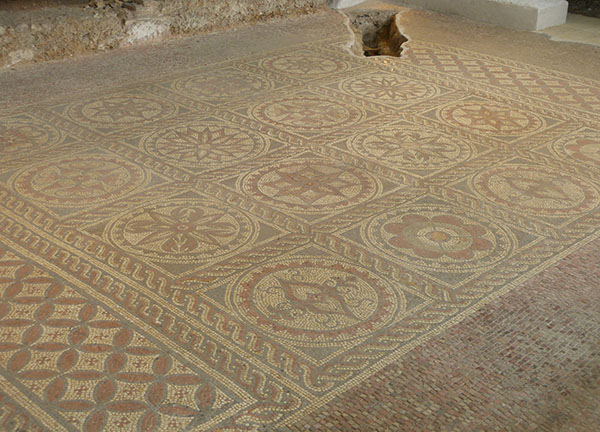
Verulamium was located just southwest from the current town centre of St. Albans, which is now in a park called Verulamium Park. It was surrounded by walls, and there were four gates connecting to major roads out of the town to other parts of England. London Gate was the name of the gate (pictured below) that was the entrance from London with the road from Dover to Chester. Colchester was linked via the gate on the east and Silchester via the southwestern gate. The four passageways (two for carriages and two for pedestrians) can clearly be seen in the footprint of the old London Gate.
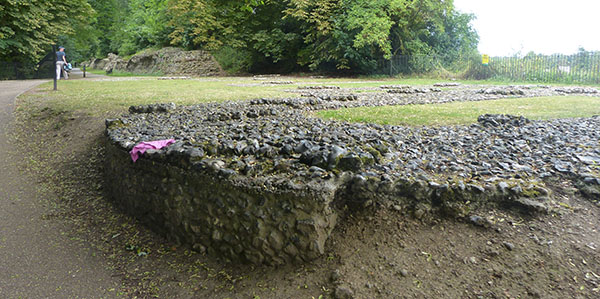
There are only small sections of the old Roman wall in Verulamium Park, and from parts of these walls, there are good views of the cathedral here. Of course, the cathedral did not exist at the time of the Romans. Now, it takes a good portion of the skyline here. The site of the cathedral and lake in front of it were actually the Roman cemetary, which was just outside the city walls. The necropolis was always outside of the walls by law.
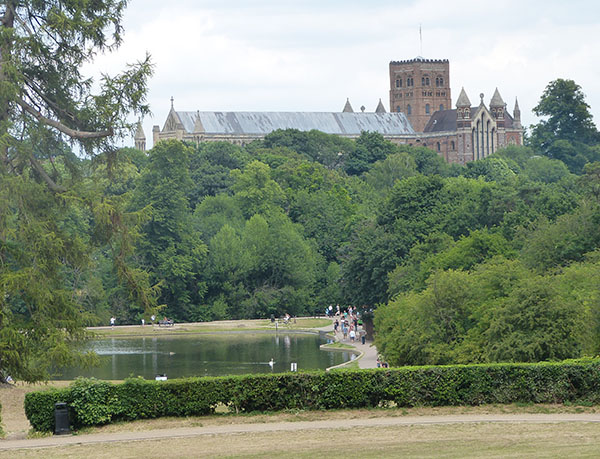
One of the most important aspects of Verulamium Park that the Romans left behind, which can be seen today, are in-situ mosaics. This huge floor formed one of the largest town houses of Verulamium. It was 2-storeys high and had 33 ground floor rooms. A building has been constructed over the mosaic in order to protect it, and a part of the floor has been taken away to reveal the heating system. Under the floor were channels made using terracota bricks which would channel the air from a furnace room to heat the floor. This house dates from the 3rd century, when Verulamium was in its prime as a rich town that relied on trade.
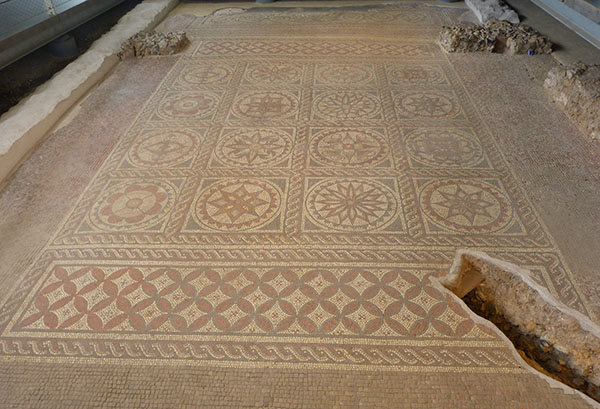
When the Romans came in 34AD, they were careful to gain the respect of the local Celtic tribe, known as Catuvellauni. They believed that the marshes (from which the town was given its name, "above the marsh") and bodies of water are sacred places, and the Romans allowed them to practice their ceremonies. However, Boudicca hated the Romans and managed to burn Verulamium, along with other Roman towns. Verulamium was rebuilt in 140AD, and a new theatre was put on the site of a temple.
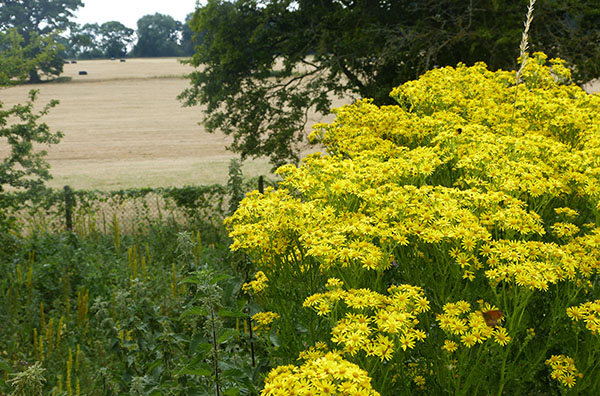
I went to visit the theatre, which had a concert event taking place at some point where people had been set up and practicing. Unfortunately, this took away from the atmosphere, but the seating area and inner circle of the theatre could be seen. The theatre could hold 7,000 people. Most Roman towns had a theatre, but this is the best-preserved one; I remember seeing one at Silchester too.
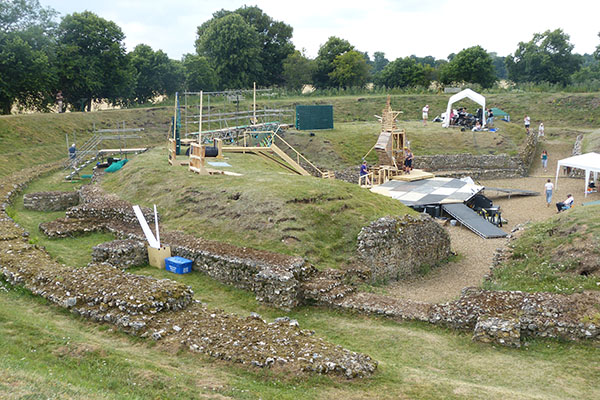
The other popular feature is the presence of the columns on the stage, which would have been painted. The columns were made of sandstone, and only one exists, replaced to its location, today. Bullfights, swordfights, and executions also would have been expected to take place here. Greek and Latin plays may have also been performed, but it was more likely that it in this part of the Roman Empire, pantaminus (where the word 'pantomimes' comes from), which was the word for a silly play with a lot of dancing and music.
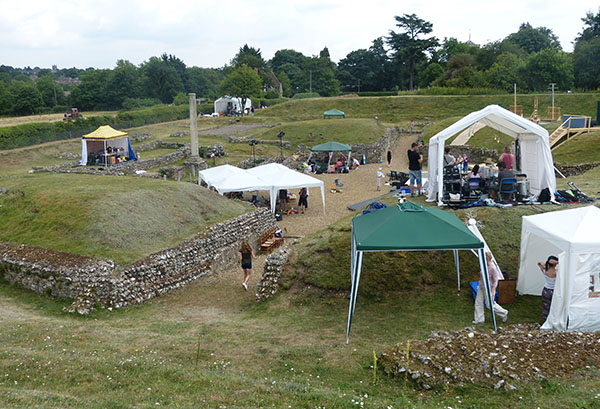
The theatre was associated with paganism and probably declined when Christainity spread. Many temples were built near the theatre. Outside the theatre were shops that probably would have sold trinkets of gods and goddesses and other items. The shops were blacksmith and bronze shops. Oil lamps may have also been sold here as well as glass jars and any items that would have been put into them.
After visiting the theatre, I went to Verulamium Museum, which is an award-winning museum located across the road from the theatre. It was built on the site of the Roman Forum. The Roman town was one of the most important ones in England. It was escavated in the 1930s, and many of the foundations were re-buried.
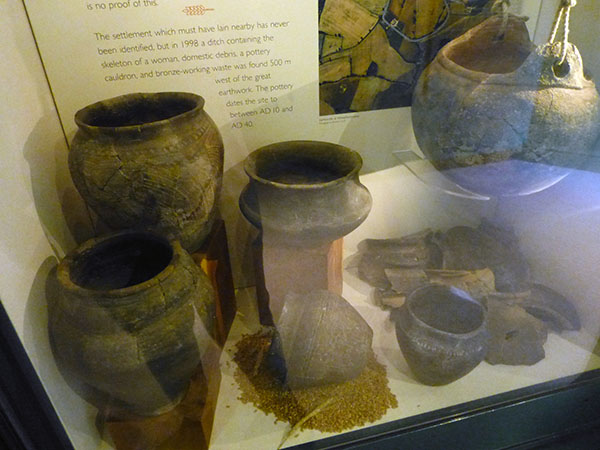
Many clay pots and coins were found at the location of Celtic Verulamium. It had its own mint. The Catuvellauni were known as experienced warriors. They would have settled the ground nearer Wheathampstead first as earthworks and pieces of pottery were found here. The Romans must have regarded them as important as they traded with them and there seems to be a sign of respect instead of completely conquering them.
Cremation became one of the burial practices (from France), and urns were filled with pieces of bone as well as pieces of prized possessions. On a hill not far from the town was a burial for a king, whose name has been lost. A temple was later constructed here, but it is clear that a large event took place on top of the pyre before the temple had been built. This also explains that Romans did respect the people and this king, who would have had the support of his people.

One of the temples in the town was called The Triangular Temple because it was in the shape of a triangle at the crossroads. It was for the goddess Cybele, who was the goddess of wealth and growth of cities. Another temple was located near the theatre. A church was constructed near the site afterwards, showing that the religion of the people changed over time. Near the temple, the small figures of gods, goddesses, and other figures were discovered and these would have been bought for the shrine that people had in their homes.
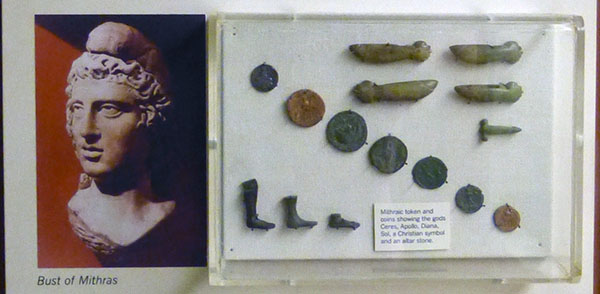
Little charms have also been found, and people would wear these or use them as offerings. Coins bearing symbols or phallic symbols were for fertility or to ward off evil. Others were symbols of feet or legs, which may have meant that they prayed for these body parts to be healed.
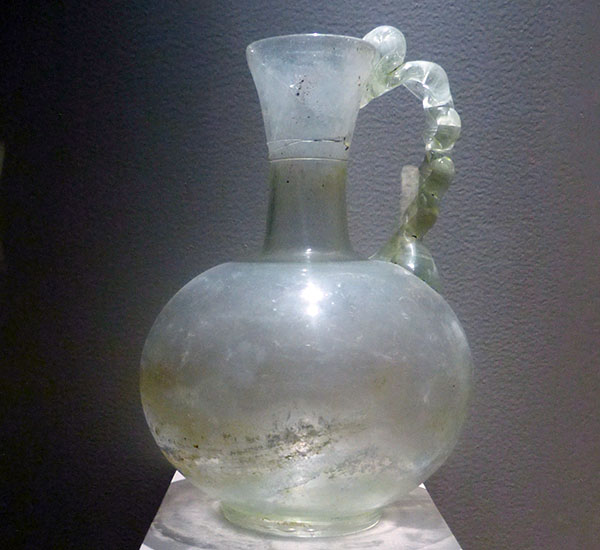
Inside the museum were items traded from across the Roman Empire. The above glass jug was found in a coffin with a skeleton with a couple of other glass jugs. Other items traded included wine, olive oil, and other liquids that were put into different types of amphorae from across the Roman Empire.
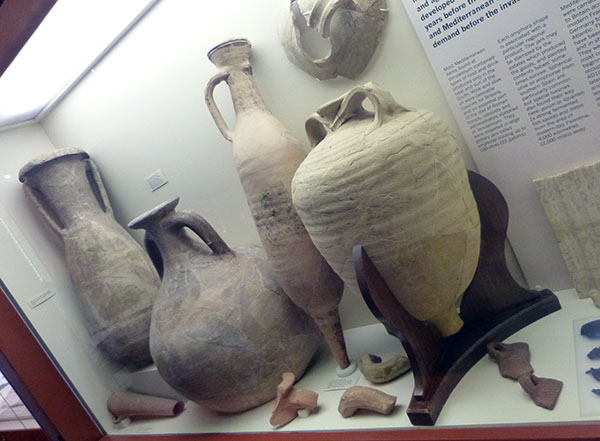
Another important item discovered was found in the cellar of a metal-worker's shop. It must have an interesting story; perhaps it was going to be repaired or cleaned. Anyway, it would have probably had the pride of place in a private temple. It is a statue of Venus holding an apple. Mercury was the most popular diety on display in Verulamium because more of the god had been found than any other.
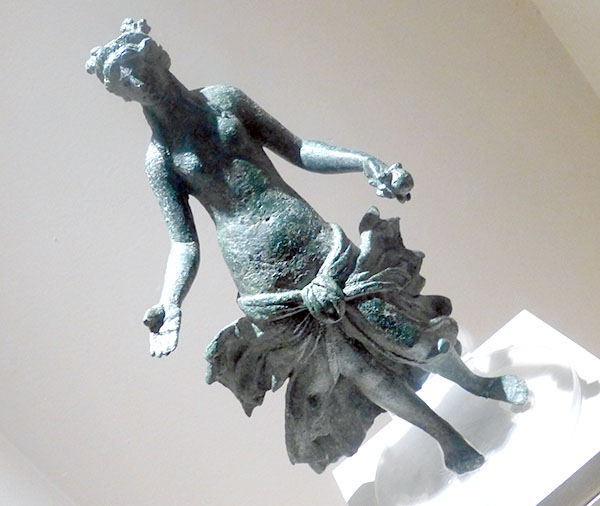
Also, Celtic figures to represent fertility, wealth and livestock were also common.
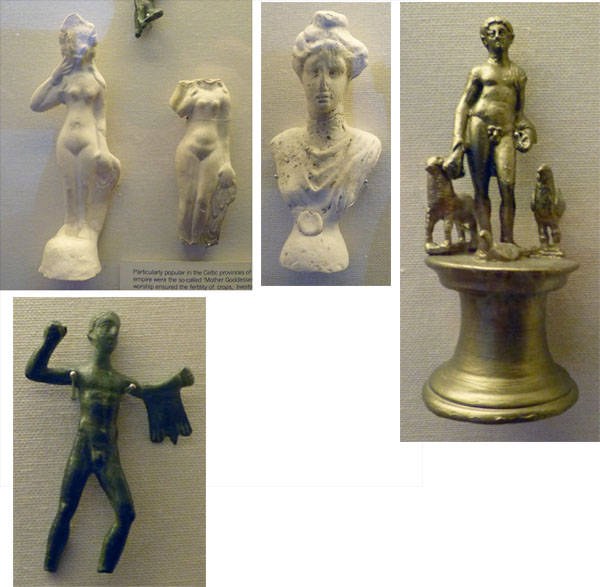
One of the most important parts of the museum was seeing the mosaics, which were recovered from different houses at Verulamium.
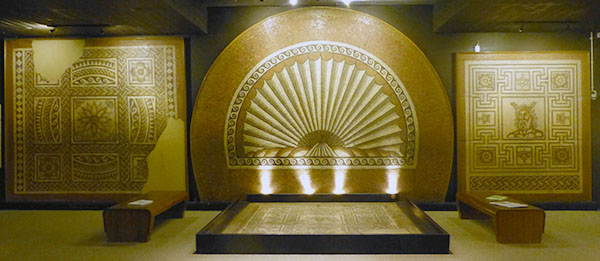
A room decorated like a Roman house was also included in a part of the museum. This area demonstrated the different trades of the people of the Roman city.

Another area showed how the people regarded animals. Several paw prints from animals were discovered in drying clay. People lived with cats to catch rodents and dogs. There was also information found on the types of tools used to harvest the land. Verulamium was popular because of its success at farming and agriculture.
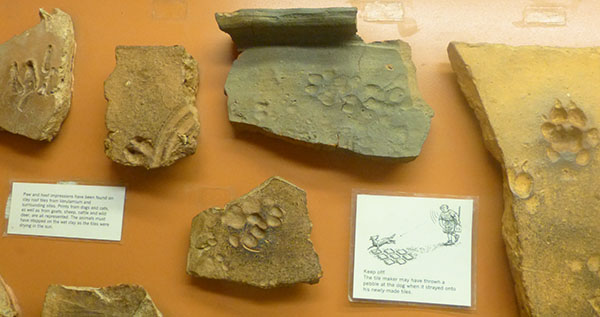
The last part of the museum was an area about death. It included information about cremations and burials. Cremation took over as the most popular burial by 250AD. The best items were actually found in graves so that the dead could use them in the afterlife. Items included food, pottery or glass jars, shoes, clothing, and other trinkets.
One of the items on display was a child's coffin with tiny bones; a toy box was placed at the foot of the child decorated with seashells from the Mediterranean. A single coin was also included for the journey to the afterlife.

Another skeleton had a bronze bust above it, and it was created by examining the skull of the deceased.
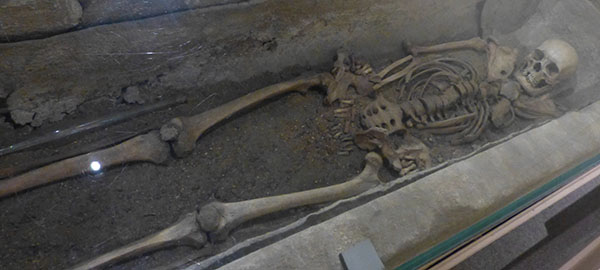
A couple of other skeletons were on display in their stone coffins, which were cased with lead. They are of a man and wife, and they must have been rich to have this type of burial. A couple of skeletons of babies were also on display. Babies could be buried inside the town's walls as long as they were younger than 40 days old.
That concludes the trip to Verulamium. I recommend a visit to see the mosaic floor and the museum, which was very good. If this interests you, may also be interested in my trip to Silchester, which you can read about here: Pub Lunch at Mattingley's 'Leather Bottle' and a Visit to Silchester.

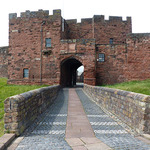

Leave a comment